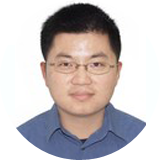
王宇
中国科学院动物研究所
博士,研究员,博士生导师;干细胞与生殖生物学国家重点实验室干细胞与小分子调控实验室负责人。有多篇论文发表于国际重要学术期刊PNAS、JACS、Nucleic Acids Research、Cell Chemical Biology、ACS Chemical Biology、Current Opinion in Cell Biology等,另外持有2项关于蛋白标记、药物筛选技术、候选药物分子结构的PCT及美国专利。
HIT: MULTIMODE CRISPR SYSTEMS UNDER DRUG CONTROL
Inducible modulation is often required for precise investigations and manipulations of dynamic biological processes. Greater precision is also beneficial towards the translational ends for development of gene therapies. Inspired by the broad utility of CreERT2, we envisioned engrafting ERT2 to CRISPR/Cas9 and TALE/N systems and named them HIT(Hybrid Inducible Technologies). We primarily focused on genome editing and transcriptional activation as they would deliver functional perturbations in "gain of function" and "loss of function" manners respectively. We first engineered and optimized HIT-Cas9 for genome editing. Tight and efficient genome editing was accomplished in a 4-OHT inducible fashion across multiple human cell types, including embryonic stem cells (ESCs) and mesenchymal stem cells (MSCs) with clinical utilities, through combinatory engineering of Cas9, ERT2, and nuclear export signal (NES). Then we established and comprehensively optimized a series of HIT transactivation systems, among which HIT-SunTag delivered the most robust drug induction without background activity in its absence. Next, simultaneous gene activation and editing was delivered in drug inducible manner using a second generation device termed HIT2 (hitting two birds with one stone). These systems delivered advantageous performances over several designs published previously in head-to-head comparisons. Further, HIT architectures developed herein may be applied directly to orthogonal Cas9 species, demonstrated with SaCas9, and to TALE and TALEN. We also demonstrated that drug induction is titratable, selective,rapid,and reversible. Together, HIT systems developed herein would open broad avenues towards many applications as a comprehensive toolbox, especially when precision and dynamics is required for a functional perturbation.
专注于小分子药物和干细胞生物学两个领域的融合交叉研究,我们致力于应用药物发现的技术发现再生医学和癌症的新机制、新靶点,进而开发新药物.
2004年本科毕业于中国科学技术大学
2010年博士毕业于哈佛大学化学与化学生物学系,师从Andrew P. McMahon教授
2010年起于哈佛大学和Morgridge研究所分别做博士后研究,先后师从于Lee L. Rubin教授和James A. Thomson教授。
- Zhao, C1., Zhang, Y1., Zhao, Y., Ying, Y., Ai, R., Zhang, J., Wang, Y.* (2018) Multiple Chemical Inducible Tal Effectors for Genome Editing and Transcription Activation. ACS Chemical Biology. 13(3): 609-617.
- Lu, J1., Zhao, C1., Zhao, Y1., Zhang, J1., Zhang, Y., Chen, L., Han, Q., Ying, Y., Peng, S., Ai, R., Wang, Y.* (2018) Multimode drug inducible CRISPR/Cas9 devices for transcriptional activation and genome editing. Nucleic Acids Research 46(5): e25
- Liu, L., Zhang, J., Rheindt, F.E., Lei, F., Qu, Y., Wang, Y., Zhang, Y., Sullivan, C., Nie, W., Wang, J., Yang, F., Chen, J., Edwards, S.V., Meng, J., Wu, S., (2017) Genomic Evidence Reveals a Radiation of Placental Mammals Uninterrupted by the KPg Boundary. PNAS 114 (35):E7282-E7290.
- Wu, F., Zhang, Y., Sun, B., McMahon, A.P., Wang, Y.* (2017) Hedgehog Signaling: From Basic Biology to Cancer Therapy. Cell Chemical Biology. 24 (3): 252-280.
- Ding, H., Yang, D., Zhao, C., Song, Z., Liu, P., Wang, Y., Chen, Z., Shen, J. (2015) Protein Gold Hybrid Nanocubes for Cell Imaging and Drug Delivery. ACS Appl. Mater. Interfaces 7 (8): 4713–4719.
- Schwartz, M.P., Hou, Z., Propson, N.E., Zhang, J., Engstrom, C.J., Costa, V.S., Jiang, P., Nguyen, B.K., Bolin, J.M., Daly, W., Wang, Y., Stewart, R., Page, C.D., Murphy, W.L., and Thomson, J.A. (2015) Human pluripotent stem cell-derived neural constructs for predicting neural toxicity. PNAS 112 (40): 12516-12521.